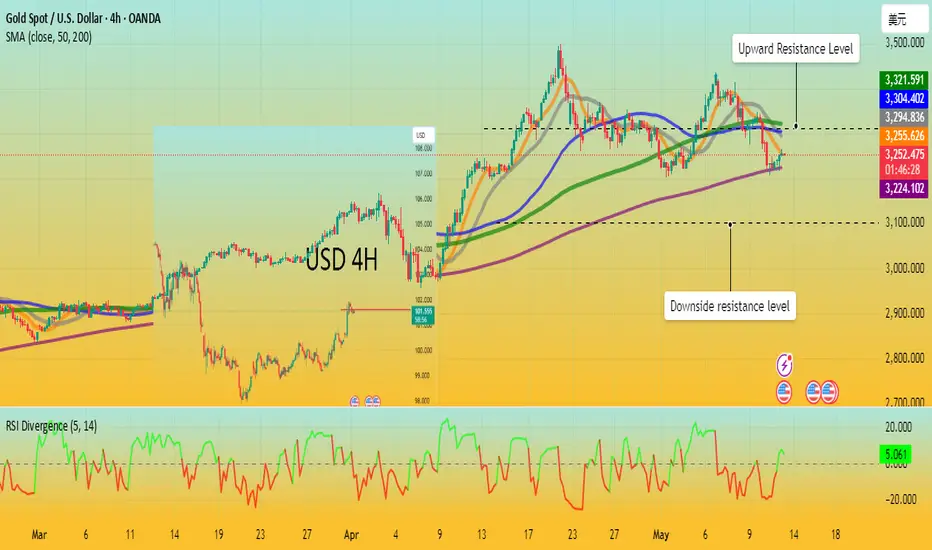News summary:
After two days of negotiations in Geneva, China and the United States announced that they would reduce tariffs on each other in the next three months: the US tariff on Chinese imports would be reduced from 145% to 30%, and China's tariff on US goods would be reduced from 125% to 10%. This news pushed global stock markets up.
Boosted by the agreement, market risk appetite has increased, investors' concerns about the US recession have eased, and expectations for the Fed's aggressive rate cuts this year have also declined accordingly, which has pushed the US dollar to continue to strengthen, and gold, as a traditional safe-haven asset, has come under pressure.
Technical analysis:
Gold prices fell below the 21-day moving average on Monday, when the average was at $3,313, further increasing downside risks. The 14-day relative strength index also fell below the midline for the first time since early April, sending a bearish signal. Buyers are trying to regain control of the situation.
Traders need to pay attention to the release of US CPI data.
I think if the US CPI data is higher than expected, gold prices may start a new round of decline, with the target being $3,145 near the 50-day moving average. The important support level below is $3,100.
On the contrary, if the CPI data is lower than expected, gold prices are expected to re-enter the 21-day SMA, which is currently $3,311. Once this resistance is broken, it will test the trend line resistance at $3,430. If it breaks further, the trend will open up space for gold prices to hit the historical high of $3,500.
After two days of negotiations in Geneva, China and the United States announced that they would reduce tariffs on each other in the next three months: the US tariff on Chinese imports would be reduced from 145% to 30%, and China's tariff on US goods would be reduced from 125% to 10%. This news pushed global stock markets up.
Boosted by the agreement, market risk appetite has increased, investors' concerns about the US recession have eased, and expectations for the Fed's aggressive rate cuts this year have also declined accordingly, which has pushed the US dollar to continue to strengthen, and gold, as a traditional safe-haven asset, has come under pressure.
Technical analysis:
Gold prices fell below the 21-day moving average on Monday, when the average was at $3,313, further increasing downside risks. The 14-day relative strength index also fell below the midline for the first time since early April, sending a bearish signal. Buyers are trying to regain control of the situation.
Traders need to pay attention to the release of US CPI data.
I think if the US CPI data is higher than expected, gold prices may start a new round of decline, with the target being $3,145 near the 50-day moving average. The important support level below is $3,100.
On the contrary, if the CPI data is lower than expected, gold prices are expected to re-enter the 21-day SMA, which is currently $3,311. Once this resistance is broken, it will test the trend line resistance at $3,430. If it breaks further, the trend will open up space for gold prices to hit the historical high of $3,500.
Disclaimer
The information and publications are not meant to be, and do not constitute, financial, investment, trading, or other types of advice or recommendations supplied or endorsed by TradingView. Read more in the Terms of Use.
Disclaimer
The information and publications are not meant to be, and do not constitute, financial, investment, trading, or other types of advice or recommendations supplied or endorsed by TradingView. Read more in the Terms of Use.
